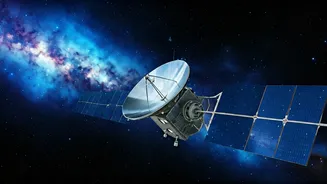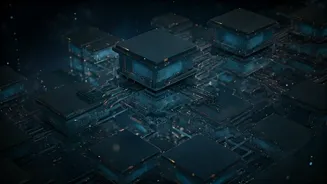Securing Space Data
The field of quantum mechanics is being harnessed to improve the safety of data transmitted through space. A prominent application currently in development
is quantum key distribution, or QKD. QKD uses the principles of quantum mechanics to allow for secure information transmission. This advanced technology enables the instantaneous detection of any attempts to tamper with or intercept communications between nodes. Debra Werner, along with a European consortium, is actively involved in preparing to test quantum key distribution. They are set to use the Eagle-1 satellite, scheduled to launch in 2026, to relay quantum keys. This initiative is aimed at improving the security of banking, critical infrastructure, and governmental applications. Ground terminals across Europe are already being upgraded and deployed to facilitate testing in the coming year.
Eagle-1's Mission Begins
The Eagle-1 satellite represents a significant leap forward in the application of quantum technology. Its primary function will be to transmit quantum keys, which are essential for enhanced cybersecurity measures. This satellite will play a vital role in safeguarding sensitive data across different sectors. The development and deployment of the Eagle-1 satellite signal an important step towards integrating quantum technologies into real-world applications. The launch of Eagle-1, slated for 2026, will mark the beginning of trials and real-world application of QKD. The successful implementation of QKD could have far-reaching effects on information security. This would be crucial in protecting sensitive information in financial institutions, key infrastructure networks, and government operations. The consortium, working on this project, is focused on ensuring the successful relay of quantum keys using the satellite.
Beyond Communication Security
While QKD is a critical focus, quantum technology offers potential in other areas of space applications. One such area includes the development of quantum gravity gradiometers. These devices are being researched by organizations like NASA's Jet Propulsion Laboratory and NASA Goddard Space Flight Center. Quantum gravity gradiometers measure gravitational fields with significantly greater accuracy compared to classical methods. However, the development of quantum computers for space applications remains a long-term goal. Simone D’Amico, EraDrive chief science officer, and Stanford University associate professor of aeronautics and astronautics, believes that it will take considerable time for ground-based quantum computing resources to become viable in space. This suggests that quantum computers may not be integrated into space operations in the near future.
Quantum Computing's Challenges
Quantum computers, despite their theoretical advantages, face significant hurdles before they can be used in space. The practical implementation of quantum computers in the space environment poses major challenges. Although there has been significant progress on the ground, the transition of this technology to space is expected to take time. The current focus is on applications like quantum communications and other near-term innovations. The emphasis of these developments is still geared toward secure communication and other immediate space applications. The limitations of currently available quantum computers may delay their deployment into orbit. Current focus is centered on ground-based testing and advancements of quantum technologies.













